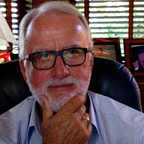The Search for Solutions to Reduce Waste in the USVI — Ralph Thurman
In the second of a series of webinars on waste management in the United States Virgin Islands (USVI), the University of the Virgin Islands Caribbean Green Technology Center enlightened viewers on the residential waste characterization study undertaken in 2019. On a daily basis, Virgin Islanders throw away 40% more waste than the average American. The characterization study was undertaken to understand the nature of our waste and to find solutions to the islands’ waste management problem.
The USVI faces a problem it shares with many islands; that is, that land is a scarce resource, and our landfills are close to capacity. Virtually everything consumed on the islands is brought in by either boat or plane, yet the waste remains with us. In the first of its webinars, the center laid out for viewers the solid waste management infrastructure that services the three islands of St. John, St. Thomas, and St. Croix. We learned that a total of 300 tons daily is collected by the Bovoni Landfill on St. Thomas (including St. John’s waste) and that the Anguilla Landfill on St. Croix collects 200 tons daily. Knowing how to reduce these volumes means understanding what they comprise.
Classifying Types of Residential or Commercial Waste
A waste characterization or audit classifies and quantifies the types of residential or commercial solid waste through a representative sampling of the waste stream. Quantities are measured by weight, not volume, as the latter presents consistency problems unless the waste can be reduced to particles of the same size, which would defeat some purposes of the process. The Center’s audit focused on residential waste. It took random samples from dump trucks arriving at the Bovoni and Anguilla landfills on the same day at the same time from residential areas. It was concluded over five days from May 13–17 in 2019 and was carried out according to international standard ASTM D 5231–92(2003). Following standard protocols is essential for comparative purposes against other international studies.
The process involved spreading the contents of the samples taken over a tarp and dividing them into quadrants. Samples from each quadrant were then minutely sifted through, sorted, and identified by the study staff until all that remained were particles under ½ inch in size. Contents were logged against a list of predetermined categories, and weights were recorded within a 0.1–0.5 pound precision. Workers wore protective gear to prevent injury and infection, and fans had to be constantly run to disperse the terrible odors. It is exceptionally unpleasant work but very necessary.
Findings of the USVI Waste Audit
Casual observations from workers were that residential waste included:
- oily products that are supposed to be disposed of separately
- banned plastic items like drinking straws and shopping bags
- “whole” food waste of products that would have been edible at some point, not just inedible waste like bones
- Items in good working order, for example, a fully functioning radio
The main findings from the audit were as follows:
- 62% of our residential waste is recyclable or compostable
- Revenue from recycling is estimated at $6 million, although this doesn’t consider the costs of collection, sorting, and transportation.
- Aluminum cans, cardboard, and plastic PET bottles are the most profitable recycling components.
- Food waste is significant, and composting should be promoted.
Organic waste makes up the biggest component of residential waste in the USVI. 12% of this is construction lumber that cannot be composted if treated with toxic chemicals. However, this figure may be an anomaly because the study took place at a time when there was a lot of construction activity to repair hurricane damage. Other types of residential waste include paper at 17%, plastic at 15%, glass at 7%, and metal at 6%.
What Now?
The results of the Center’s research are being used to identify waste diversion opportunities, including source reduction, recycling, and repurposing. Another goal is to explore more sustainable “circular economy” market approaches to material management on the islands and create “green” jobs for island residents.
Kimiko Link of US EPA presented a high-level overview of possible approaches and current barriers to viewers. Solutions were ranked according to their requirement for investment. And food recovery was identified as the “low hanging fruit.” The potential for food waste from the tourism sector to be recovered to feed hungry people, create animal feed, produce biofuels for industry, or be used for composting and controlling soil erosion are all very attainable objectives that will immediately reduce pressure on our landfills.
The Island Green Living Association
Plans for a Reuse Innovation Center were also briefly mentioned, and the Island Green Living Association is proud to have initiated several reuse projects already. For example, the ReSource Depot has saved over 310,000 pounds of building materials from landfills. And the Association regularly organizes volunteers to collect and crush aluminum cans for recycling. The association’s board and members are committed to sustainable living practices and welcome all who share this objective.
Originally published at https://ralphthurman.com on August 25, 2021.
